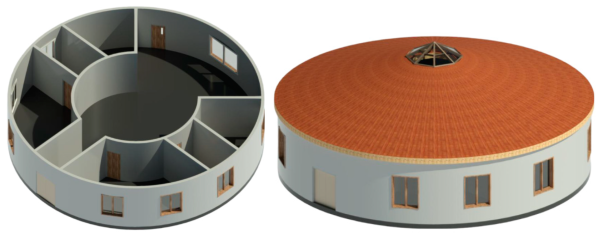Beyond its current application for residential and commercial construction in traditional urban areas, 3D concrete printing (3DCP) could be a solution for housing issues in remote and northern Indigenous communities.
This potential for 3DCP is outlined in a 2024 report titled, A Preliminary Study of 3D Printing Home Designs for Improving Efficiency and Sustainability of Indigenous Housing in Canada.
Authors based at the school of engineering at the University of British Columbia in Kelowna began their investigations by noting several factors that have resulted in inadequate housing in many Canadian Indigenous communities: poor construction methods and materials; a lack of local bylaws to enforce adequate building standards; an absence of adequate funding that often leaves half-built structures exposed to the elements; a lack of available skilled labour; and transportation challenges.
“All these issues lead to the far too common poor construction quality found in Indigenous communities, contributing to inefficiencies throughout current practice and highlighting the lack of sustainable options communities have available to them.”
The researchers considered the potential of 3DCP to overcome these and other obstacles in order to improve remote housing.

While concrete shells can be printed quickly with less waste and can be finished using traditional materials, insulation remains a challenge due to the manner in which the concrete is layered into place. The authors point out, however, that the addition of aerogels into the print material can reduce thermal conductivity.
Concrete is also brittle, a concern in areas of seismic sensitivity or where foundations are not practical due to factors such as permafrost.
Several innovations are being pursued to mitigate this problem. Adding fibres or using mesh when printing would increase tensile strength. Although such technology currently comes at a high initial price, the authors write that over time, costs can be reduced to become closer to those of conventional construction processes.
As a result, 3DCP construction could offer occupants the same thermal and strength properties as commonly used insulation and building techniques.
As much as 3DCP technology holds promise for revolutionizing housing construction in Indigenous communities, it must be adopted with careful consideration of local housing needs and cultural design factors to ensure its effectiveness and acceptance as a construction practice. Community and cultural issues at stake for Indigenous peoples include “independence, growing and maintaining a workforce and population, pride and education.”
Here, the use of 3DCP and its ability to create curved walls appear to hold intriguing possibilities. For example, the authors write circular shapes are preferred among Indigenous people and could be successfully addressed with 3DCP.
Circular shapes allow important cultural aspects such as unity, connection and equality within the family to be integrated into their homes. The addition of a skylight in the roof enhances that cultural aspect as well as adding more natural light to the interior space.
A concrete exterior is also far more resilient than traditional wood, an important factor in areas of fire risk. Importantly, the use of 3DCP would increase speed of construction while decreasing the need for skilled labour, which the authors say is in short supply in remote areas. They point out timber, a material that holds significance within these communities, can be incorporated for interior wood finishes by local labour.
In an effort to define a universally acceptable home, the authors developed a circular design consisting of 3D-printed walls of reinforced concrete, with a steel and timber circular roof slightly sloped with a conical-shaped central skylight, and wooden doors and wood-framed windows. The open-concept living area and kitchen is surrounded by bedrooms and bathrooms, including a master bedroom with ensuite, an adaptable smaller bedroom/office and a laundry room.
What holds 3DCP back is the investment cost required to bring this technology to remote areas. However, the authors observe, “Being an early investor in this technology comes with many drawbacks that have yet to be solved, but it also offers solutions to many issues the construction industry faces.”
John Bleasby is a freelance writer. Send comments and Inside Innovation column ideas to editor@dailycommercialnews.com.








Recent Comments
comments for this post are closed